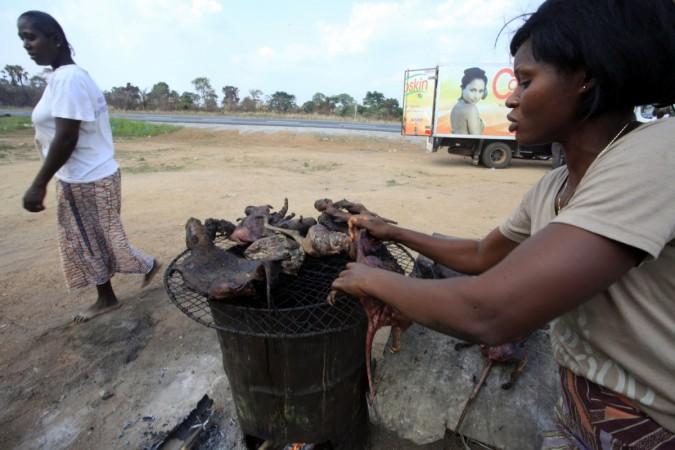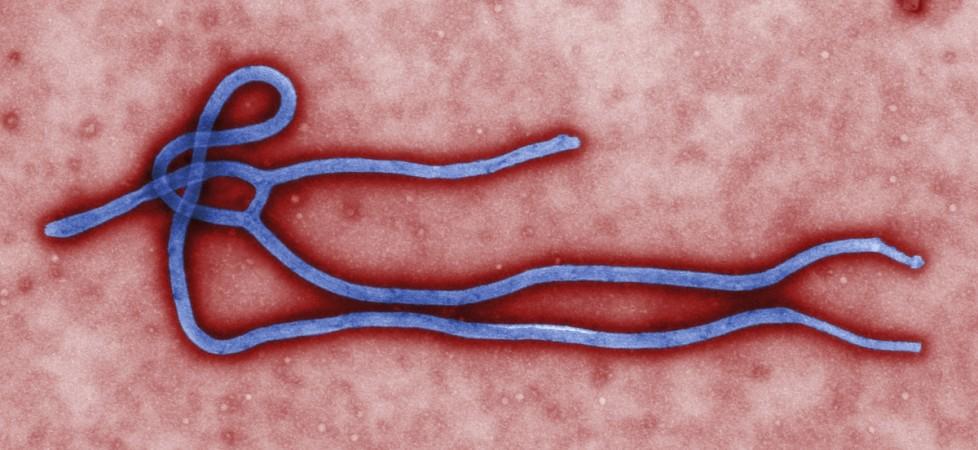![The Ebola virus has killed 887 people in West Africa since February, 2014. [Representational Picture] Ebola](https://data1.ibtimes.co.in/en/full/530867/ebola.jpg?h=450&l=50&t=40)
The Ebola virus has killed nearly 900 people in the West African countries of Guinea, Sierra Leone, Liberia and Nigeria (probable). However a proper cure for the vires seems to be far from sight, with most of the treatment coming as antibodies taken from the blood of the survivors.
Till now, the Ebola virus outbreak of 2014 in West Africa is the most deadliest outbreak of the disease known to mankind. There has been previous instances of the Ebola, which never turned out to be as severe as this one.
The Ebola virus was identified for the first time ever, in 1976, when it broke out in Zaire (now Congo). Back then it was also called he Zaire virus. It gained the name Ebola, from a river of the same name, in Zaire.
How Ebola Spreads

Scientists have not yet been able to discern how and why the Ebola virus has suddenly turned into an epidemic, as it is generally not found within humans. However, they suspect that the virus could be transmitted to humans from animals of other species – gorrillas, chimpanzees and bats.
Fruit bats are seen as the main reason why the virus has been tansmitted to the human population. The specie of fruit bats found in africa seem to be unique, as they have the ability to carry the Ebola virus within them, without getting affected by it.

It is believed that the ebola virus has spread in West Africa, because these animals are widely eaten across the region. The bats are either smoked, grilled or made into soups in these regions. It is believed that the virus could have been transmitted to human beings through the improper cooking and consumption of these fruit bats.
Non-human primates, like chimpanzees and gorrillas have also exhibited strains of the virus within them. However, unlike the bats, these creatures actually show symptoms of the Ebola Virus Disease (EVD). Handling of contaminated carcasses of these animals could have led to the transmission of the virus to humans.
The transmission from the dead may occur by people touching either the infected carcass, or the fluids secreted from it. Many believe that handling of dead monkeys, chimpanzees and gorrillas might have spread the virus amongst the human beings.
However, the dead bodies only seem to remain an Ebola threat for around four to six days after the death of the animal (or human being). After this, the body starts to decompose, and the virus seems to become inactive. Hence, since these primates themselves get affected by the virus, they are not believed to be the main reason for their spread. However, the virus spreads very quickly between people; though it is not quit clear how.
Symptoms and Cure of Ebola Virus

EVD is very hard to detect in the initial stages, as the general symptoms do not start before eight to ten days after contracting the infection. This makes it difficult to treat the virus, once the symptoms have started. This is one of the main reasons the virus has shown around 60 per cent mortality rate in the 2014 West African outbreak.
The early symptoms of the Ebola Hemorrhagic Fever (EHF) are not particularly specific, and makes diagnosis extremely difficult. Some of the early symptoms are muscle and joint discomfort, decreased appetite, stomach discomfort, diarrhea, vomiting, weakness, headache and fever.

More symptoms pop up in the advanced stages of the disease, such as, difficulty in swallowing and breathing, internal and external bleeding (excretion of mucous, reddening of the eye, bleeding from puncture wounds), chest pain, cough, sore throat, hiccups and rashes.
It is not clear how some patients survive the disease, while others die. However, the doctors attribute it to the fact that their immune system is better. This is why blood from the survivors of the EHF is used as treatment for the disease.
An experimental drug called ZMapp has been proved to have successfully cured chimpanzees from the virus. However, recently, Dr Kent Brantly, 33, who had contracted the virus while treating patients in Liberia, consented to being treated with this medication. The results seem to be positive, as Dr Brantly seems to be on the path to recovery. Most of his symptoms have gone.
However, the WHO have condemned the use of this experimental drug, without a proper clinical trial. Now, Dr Brantly's colleague, Nancy Writebol, who has also contracted the disease, has concented to its use. It is to be seen whether ZMapp could turn out to be the new cure for the Ebola virus, or whether it is just another failed trial drug.














